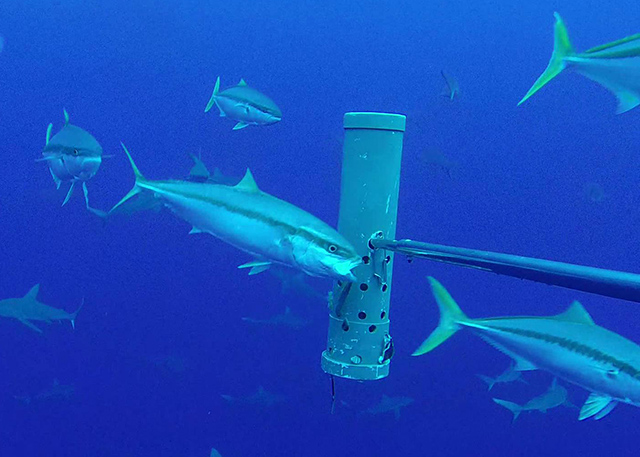| Carangidae (Jacks and pompanos), subfamily: Naucratinae |
| 250 cm TL (male/unsexed); max.weight: 97 kg; max. reported age: 12 years |
|
benthopelagic; brackish; marine; depth range 3 - 825 m |
| Circumglobal in subtropical waters: Series of disjunct populations. Indo-Pacific: South Africa, Walter Shoals, Amsterdam Island, Japan, Australia, New Zealand, New Caledonia, Hawaii, Rapa, Pitcairn Island, and Easter Island. Eastern Pacific: British Columbia, Canada to Chile (Ref. 2850), including Desventuradas Is. and Juan Fernández Is. (Ref. 89357). Eastern Atlantic: St. Helena, South Africa (Ref. 7097). |
|
Dorsal spines (total): 5-6; Dorsal soft rays (total): 33-35; Anal spines: 2-3; Anal soft rays: 20-21. The only jack without scutella on the caudal peduncle. Dark blue dorsally and almost white ventrally; with a well defined line of demarcation between the two colors. |
| Adults are benthopelagic in coastal and oceanic waters, off kelp beds and rocky areas (Ref. 2850), sometimes entering estuaries (Ref. 9563). They are solitary or in small groups and can be found near rocky shores, reefs and islands (Ref. 6390). Schools of juveniles are generally found in offshore waters, often near or beyond the continental shelf (Ref. 27865). They prefer warmer water (18-24°C) although they are occasionally found in cooler water (Ref. 27128). Adults feed on small fish, squid and crustaceans (Ref. 27121). Marketed fresh and salted or dried (Ref. 9283). |
|
Least Concern (LC); Date assessed: 09 March 2015 Ref. (130435)
|
| harmless |
Source and more info: www.fishbase.org. For personal, classroom, and other internal use only. Not for publication.

